Collect these 11 edible wild herbs in spring – which wild herbs will give you the necessary power now?
Learn how easy it is to identify the eleven most common edible wild herbs in spring and what you can do with them. These wild herbs bring power.
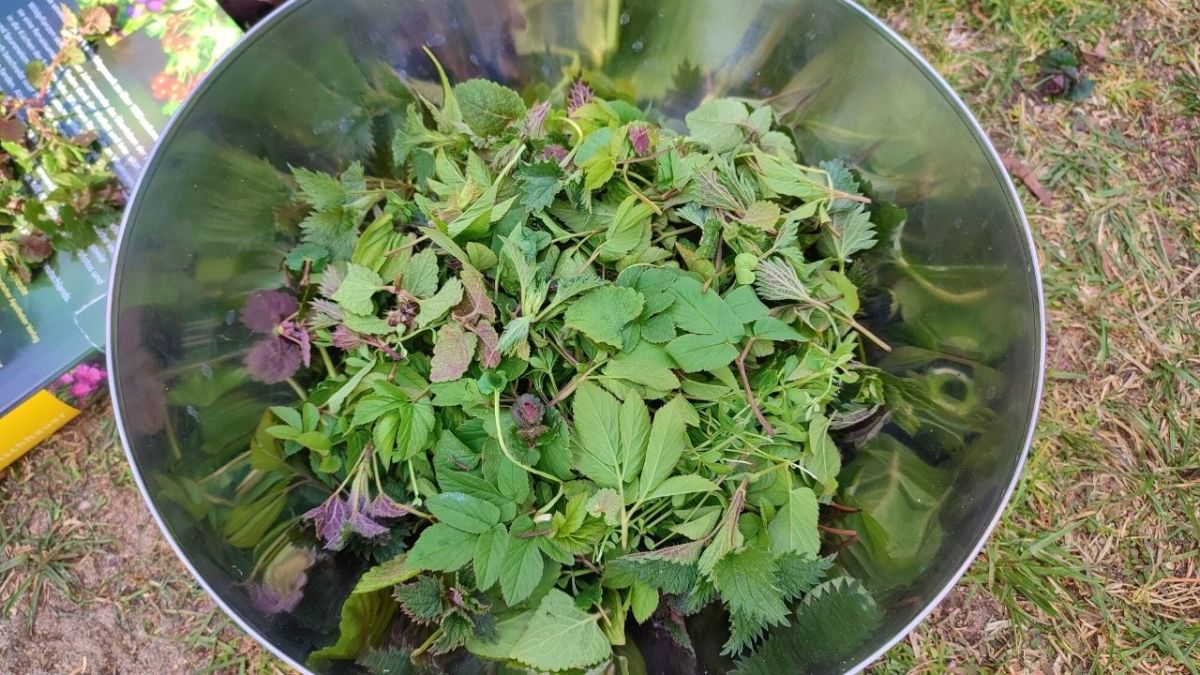

From Martin Gebhardt. Check out my “About me” page.
👉 The key facts from this guide
- In spring, wild herbs are at their strongest and offer many benefits for our health. They are rich in vitamins and minerals and can be used as an alternative to conventional remedies.
- Bear garlic is a strong remedy against spring fatigue and provides you with important vitamins and minerals. You can eat it raw or use it in various dishes.
- Ground elder is an often overlooked power plant that is rich in vitamin C, zinc, and protein. You can use it in salads or drink it as tea.
- Lady's mantle is rich in iron, magnesium, silica, and calcium. You can drink it as tea or use it in various dishes.
- Ground ivy is a strong herb for seasoning in the kitchen. It can be used in various dishes and also has medicinal properties.
- Garlic mustard is a vitamin bomb with a garlic note. It can be used in salads and herb dips and is a great match for cheese.
There are more than 300,000 plants growing in the world – and there are wild plants just waiting to be picked by you. But with so many options, it's hard to know where to start.
Finding the right herbs for different dishes, applications, and remedies can be a tricky process. You have to know all the different types of herbs.
Today, in my guide, I'll show you how easy it is by telling you the eleven most common wild herbs in the spring and what you can do with them.
Wild herbs are strongest in spring
This guide is part of the "Wild Herbs in the Seasons" series.
Spring is a perfect time to explore and collect wild herbs. Many plants are then at their strongest and offer dozens of benefits for our health.
In the small plants lies all the power for the coming growth.
Wild herbs offer medicinal properties, are rich in vitamins and minerals (Micronutrients), and can be used as an alternative to conventional drugs.
How you can benefit from this and which wild herbs you can find in spring, you will learn in the following text.
1. The Wild Garlic – Bear Powers Against Spring Fatigue
According to folklore, bears ate this plant after their long winter hibernation to be fit again for the coming year.
Whether there is anything to it, everyone may decide for themselves, but the power of wild garlic remains undisputed.
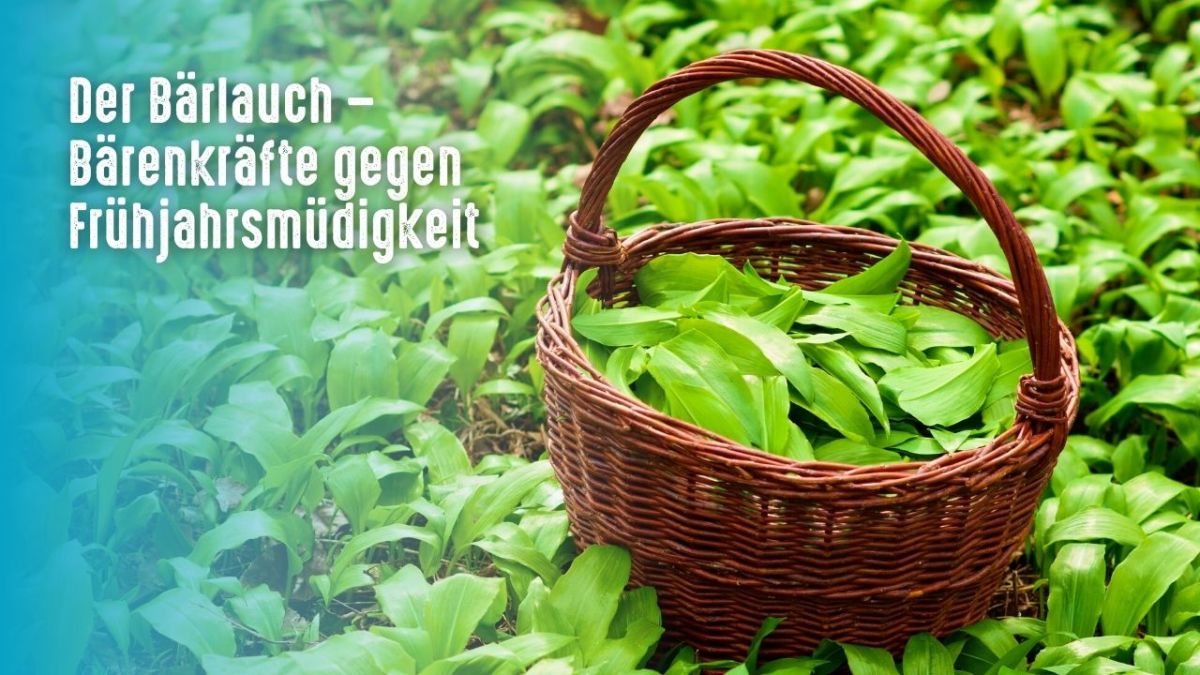
You can mainly find it from March in damp meadows and deciduous forests.
Usually, Wild Garlic forms large carpets that cover the forest floor.
It is especially suitable for treating spring fatigue and provides you with important vitamins and minerals.
It has a very high vitamin C content, so a handful of Wild Garlic is sufficient to cover your daily requirement. It also contains calcium, potassium, magnesium, sodium, and phosphorus.
Just the thing to give your winter-weary bones new life.
In pesto, soups, or salads, or as Wild Garlic butter, it develops its full flavor best when freshly prepared.
It is very aromatic and tastes slightly milder than garlic.
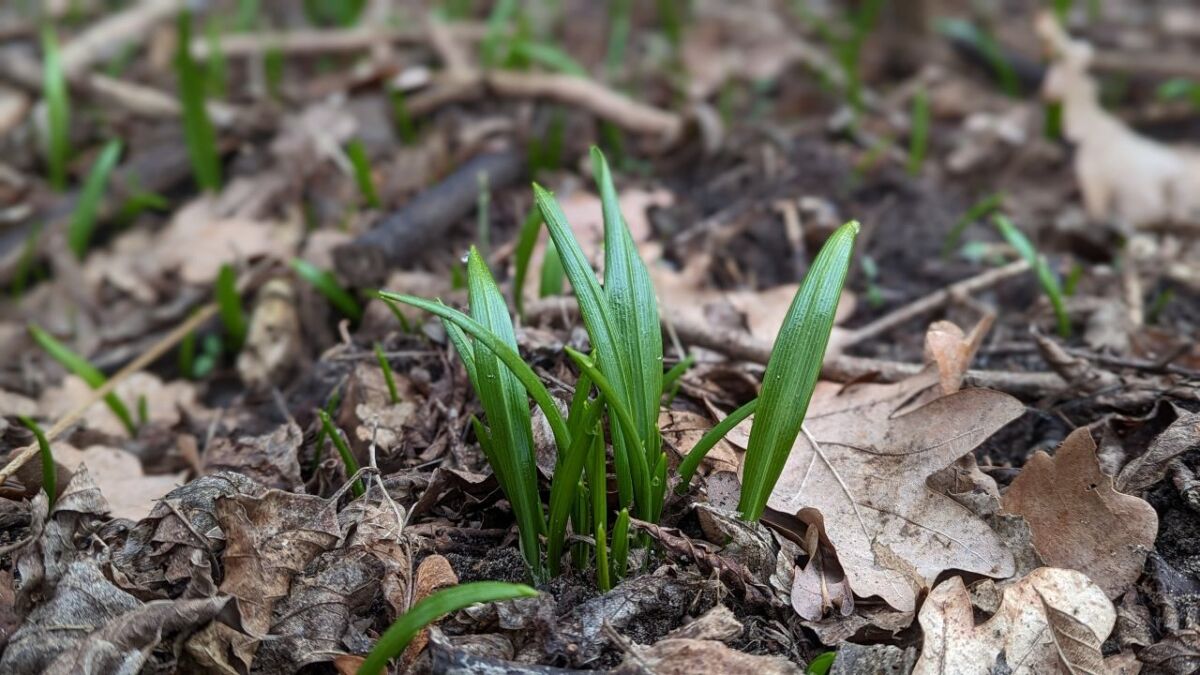
For a Wild Garlic soup, all you need is vegetable broth, salt, pepper, and cream. Purée the Wild Garlic with a few shallots and heat with the spices in a pot. Refine with cream and serve garnished with Wild Garlic flowers.
The identifying feature of wild garlic is primarily its characteristic smell, which has also earned it the name of "forest garlic". Its leaves are lance-shaped and always grow individually from the ground.
The flowers are white, star-shaped and form false umbels.
Since the whole plant is edible, it is worth collecting the closed flowers in the spring. They give salads the right kick or can be pickled like capers.
You usually cannot mistake wild garlic for other plants, with a little experience.
Nevertheless, I would like to recommend three plants to you that can still be mistaken for it.
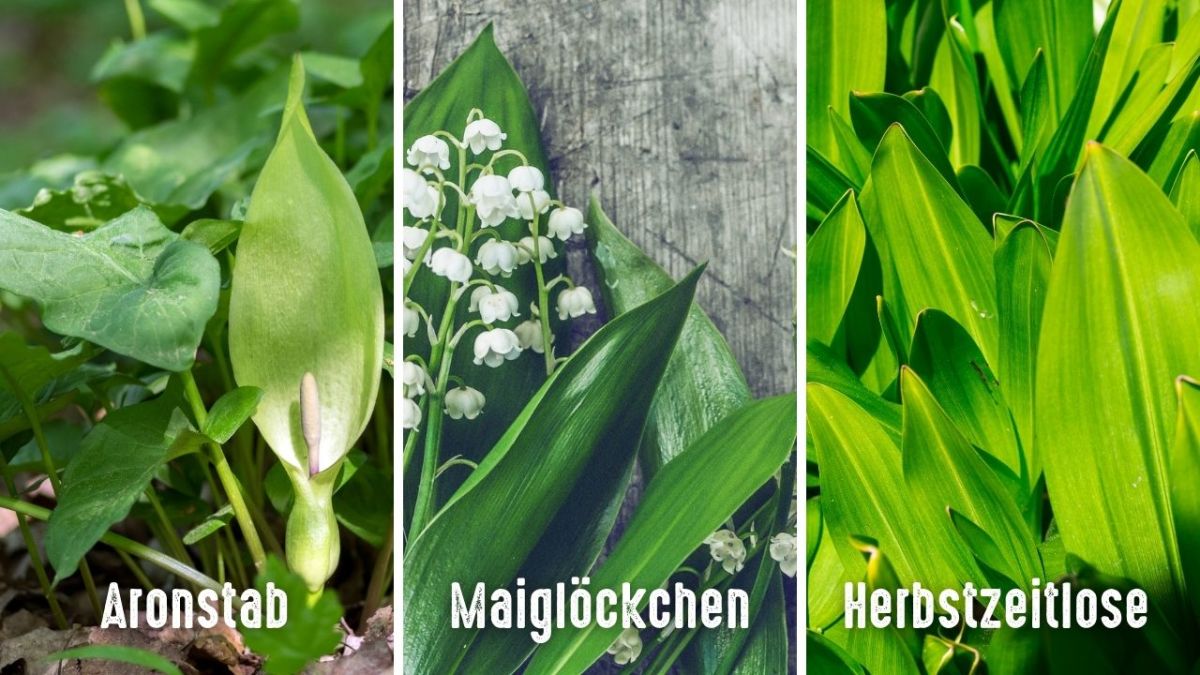
The Lily of the Valley, for example, has similarly shaped leaves. While those of wild garlic are matte and grow individually from the ground, those of Lily of the Valley shine and grow directly on the stem. In addition, Lily of the Valley lacks the typical garlic smell and doesn't grow until May.
Less similar, but treacherous, is the Lords-and-Ladies. It prefers the same location and grows at the same time as wild garlic. It often mixes in among the wild garlic plants.
You can distinguish Lords-and-Ladies from wild garlic by taking a close look at the leaves. The Lord-and-Ladies leaves are arrow-shaped, with a barb at the base of the stem. However, you cannot see the barbs on young leaves, and they have a similar shape to wild garlic. The veins of the Lords-and-Ladies leaves are irregularly shaped and not parallel-nerved like those of wild garlic.
And the Autumn Crocus also has similar leaves to wild garlic. This poisonous lookalike should not be picked or eaten either.
Therefore, when collecting, always cut wild garlic leaves individually and never pull out several leaves at once. Once you have the smell on your fingers, all other plants will smell the same, too. Therefore, some caution is required when collecting.
Tip for hobby photographers: Anyone who has ever seen a widespread garlic bloom in the forest will not forget this sight.
2. Ground elder - a forgotten power plant
Unfortunately, ground elder does not have a particularly good reputation. This is mainly because the plant claims large areas for itself and is extremely invasive.
It can be found wherever there is semi-shade. As it has no special requirements, it often challenges gardeners.
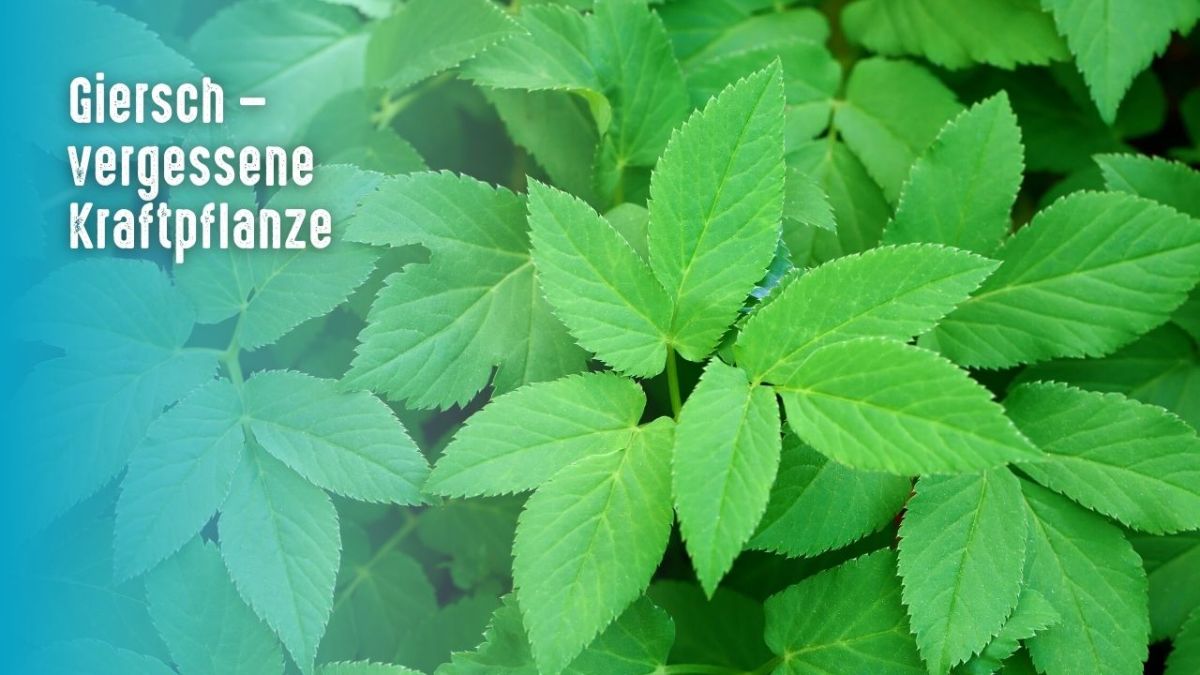
The smallest root in the ground is enough, and the ground elder finds its way back to the sun. You can use this unique power for yourself because the ground elder is loaded with vitamin C, zinc and protein. Its vitamin C content surpasses that of an orange by twelve times.
Taste-wise, it is reminiscent of parsley. The young leaves and shoots give salads and soups a final kick and can be used similarly to parsley.
You can collect ground elder from April until late summer. Since the plant produces many new shoots, you can harvest it again and again.
You can only mistake ground elder if you can't count to 3 because almost everything about ground elder has to do with this number. Its stem is triangular and reddish at the bottom. The leaves always grow in groups of 3 and are usually also divided into three parts. They are slightly serrated and when you rub them, the typical parsley smell is released.
Ground elder is particularly suitable for smoothies. There, it dispels spring fatigue and pallor, as it stimulates circulation and digestion.
Together with nettle and wild garlic, it also tastes great in fresh tomato juice.
3. Lady's Mantle - Rich in Iron, Magnesium, Silica, and Calcium
This medicinal and wild herb is primarily found in overgrown parks, in forest clearings, and on sunny meadows. While it is a typical herb for women's health, it can do much more.
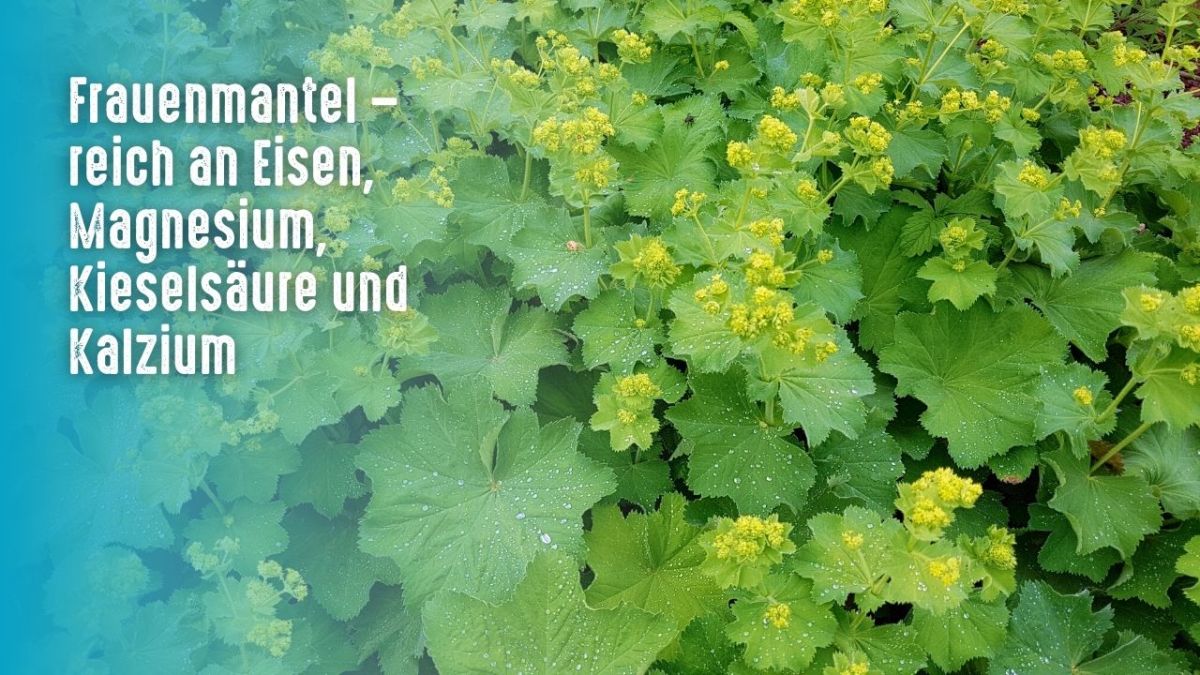
Previously, this herb was cultivated in monastery gardens and mainly used for menopausal and menstrual difficulties due to its antispasmodic effect.
The harvesting time for lady's mantle is from late April into summer.
The wild herb is rich in iron, magnesium, silica, and calcium. It benefits your bones as well as your muscles, hair, and nails.
The plant owes its name to the unusual shape of its leaves, which, when wet with dew or raindrops, actually resemble the adorned cloak of a woman.
The smooth surface and the slight concave shape of the deeply serrated, almost kidney-shaped leaves create the typical appearance.
The small yellow flowers are borne in umbel clusters on several long stems.
The delicate leaves taste like kohlrabi, making this wild herb suitable for culinary use as well.
Dried as tea, lady's mantle is also beneficial in winter because the contained tannins work as a cough and expectorant remedy.
You can chop up lady's mantle leaves and conveniently dry them in the oven at about 40 degrees. However, the process takes several hours and should be turned frequently so that everything dries evenly.
Afterward, if stored in a dark and dry place, your tea is shelf-stable for several months.
4. Ground Ivy – Strong herb for seasoning dishes
You've probably seen this plant on a walk in the woods. It grows on path and forest edges and on meadows and belongs to the creeping plants.
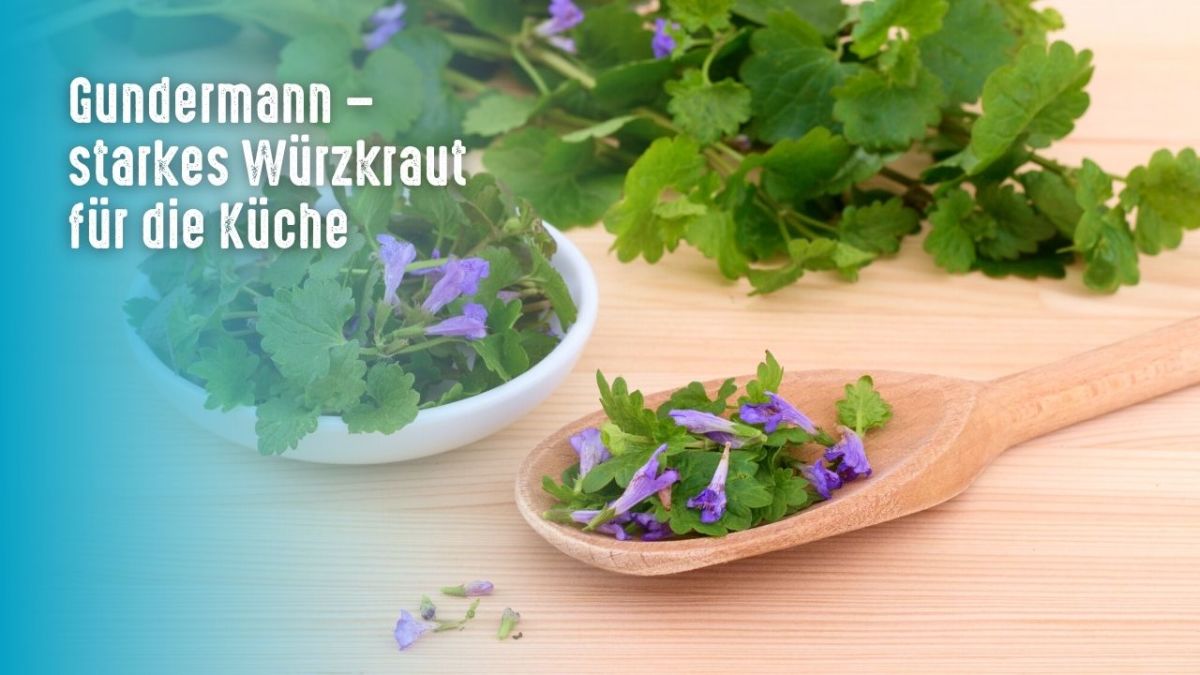
Ground ivy contains minerals, vitamins, and a large proportion of tanning and bitter substances. However, it is not of great importance in medicine.
Traditionally, it was used for upset stomachs and to eliminate toxins from the body. The juice of this plant has a calming effect on the skin and can be used similar to plantain for small wounds or insect bites.
You can recognize ground ivy by its heart-shaped leaves and purple to bluish lips. It does not grow very high and smells slightly of mint.
The only confusion that can happen here is with creeping bugle. However, as the latter is also a medicinal herb and has a similar effect, this is not a major problem.
Ground ivy is particularly suitable as an appetite stimulant in desserts, lemonade, and really all dishes where mint would fit.
You can make tea from it, round off sauces, or use it as a seasoning herb in herb quark.
Ground ivy has been used as a medicinal herb since ancient times. It was used by the ancient Greeks and Romans to treat wounds and inflammation. Furthermore, ground ivy was also used to improve the taste of wine and beer.
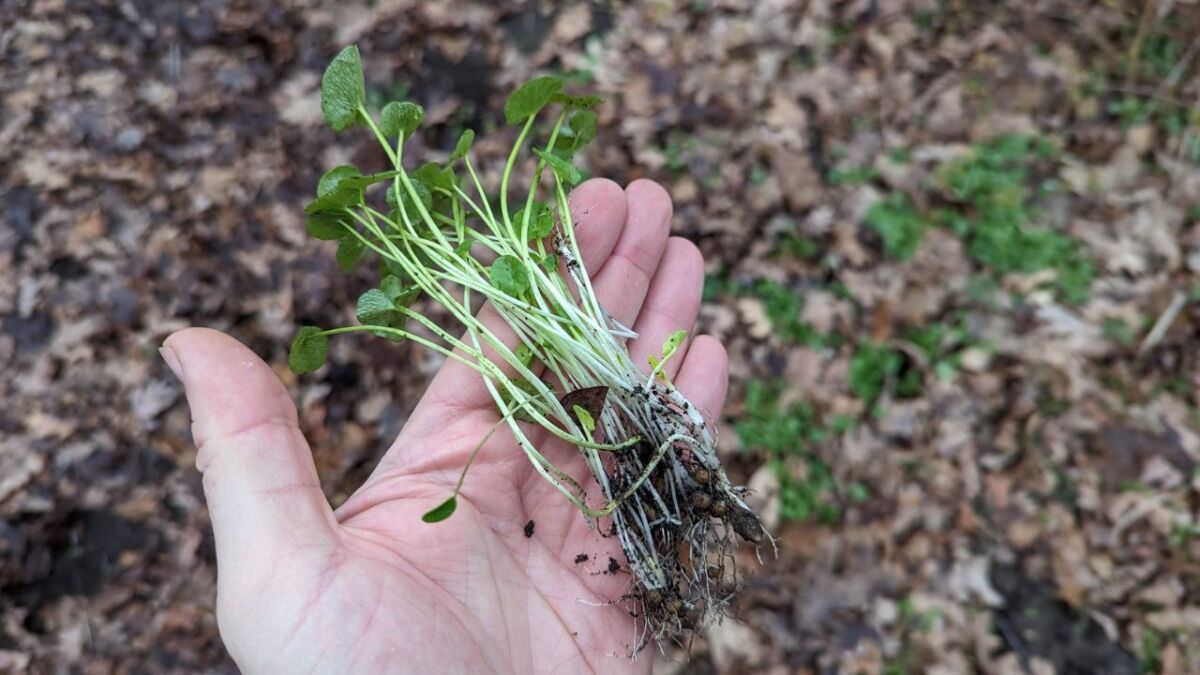
Furthermore, popular is gun dram oil. For an oil extract, you will need extra virgin olive oil and about 50g of gun dram leaves. Once you have washed and chopped the leaves, it is best to place them in a clean jar with a screw top lid.
Add the oil and seal your jar. You should then shake it a little every day for at least a week so that the plant substances dissolve.
Then strain it well and pour your oil into a dark glass bottle (brown glass from the pharmacy).
5. Daisies - in salad as a vitamin and mineral booster
For this pretty spring messenger, a location is secondary. Daisies stretch their heads towards the sun as soon as it shines a few days longer. You can find them almost everywhere.
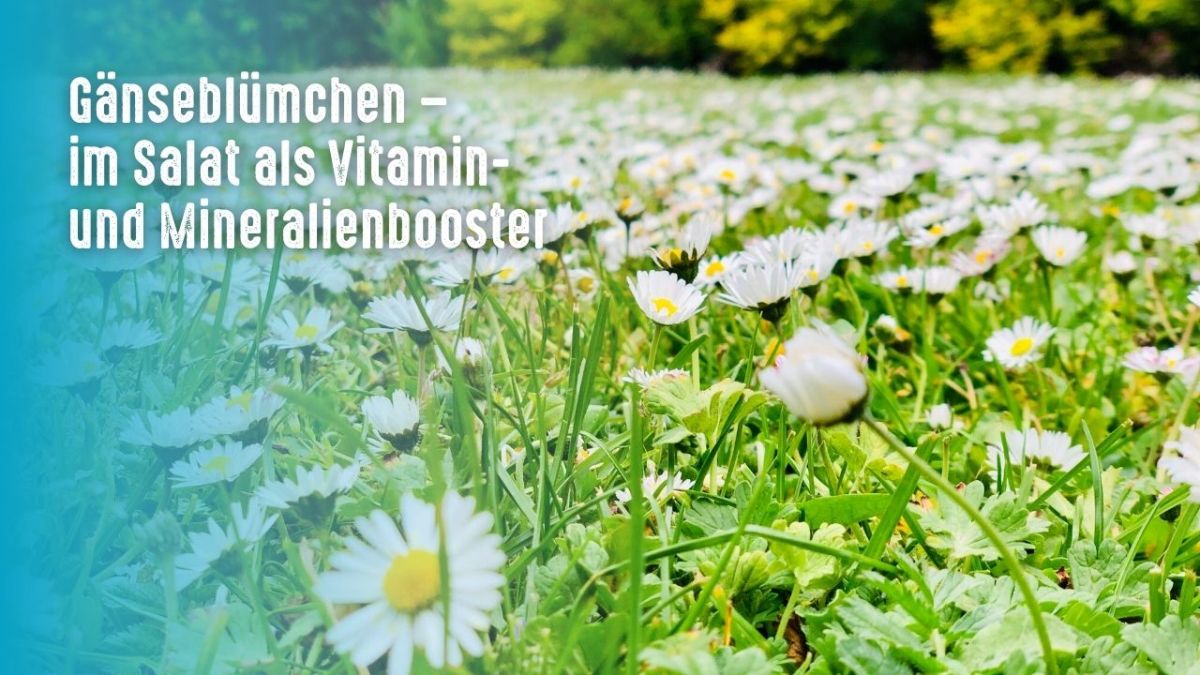
Since confusion is impossible, I will go straight to the properties. This little spring messenger is not only tasty in salads, it also offers some advantages that are almost unknown.
The daisy helps with colds and detoxification in the spring diet. It is also particularly rich in vitamin C and A. In addition, it provides large amounts of potassium, magnesium, and iron.
It has a good effect on digestion and even has several flavors. The flower heads are more nutty and the young leaves have a sour taste.
Combined, they enhance every salad visually as well as culinary. When dried, they can be used as a mucus-dissolving tea.
If they are pickled in apple cider vinegar, the still small buds can be used as a great substitute for capers in egg dishes and meatballs in white caper sauce.
Daisy also has a healing effect when used externally. It is great for treating smaller wounds or scratches. If you have a minor injury on a walk, simply chew a few daisy leaves and apply the paste to the wound.
Daisy has a blood-stopping and purifying effect. A tea made from daisy not only helps with coughing, but also has a relieving effect on bruises. To achieve this, let the tea cool down and soak the compresses in it.
Read also
Healing plant daisy in the profile (edible and delicious) – The daisy is not only a healing plant, it can also be completely eaten. Find all the information and a profile here.
6. Dandelion – for stomach problems and the immune system
Another well-known plant that I don't need to introduce further is the dandelion. Everyone knows what it looks like.
Like the daisy, it shows up when the first spring rays of sunshine warm the earth. You can find it on meadows, on the sides of roads and on forest clearings.
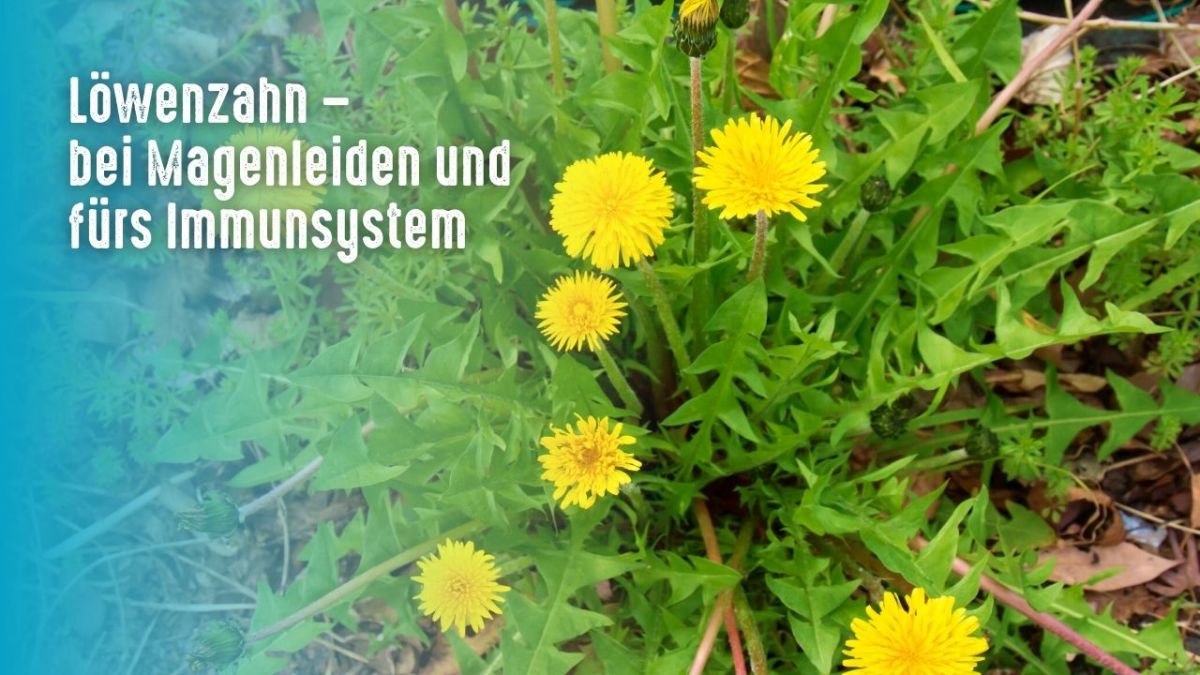
In the history of medicine, dandelion has long been used. Due to the bitter substances it contains, it does a good job for the stomach. It promotes digestion and its share of vitamins strengthens the immune system.
The flowers, young leaves and roots can all be harvested. The latter is used as a coffee substitute in times of crisis (Learn 6 ways here how to brew coffee outdoors).
To accomplish this, you cut the root into small pieces and dry them. Then you can roast the root pieces in a pan without fat and then pulverize them in a mixer.
Youthful leaves are not as bitter as the mature ones and are suitable for salads. The flowers also make a nice edible decoration.
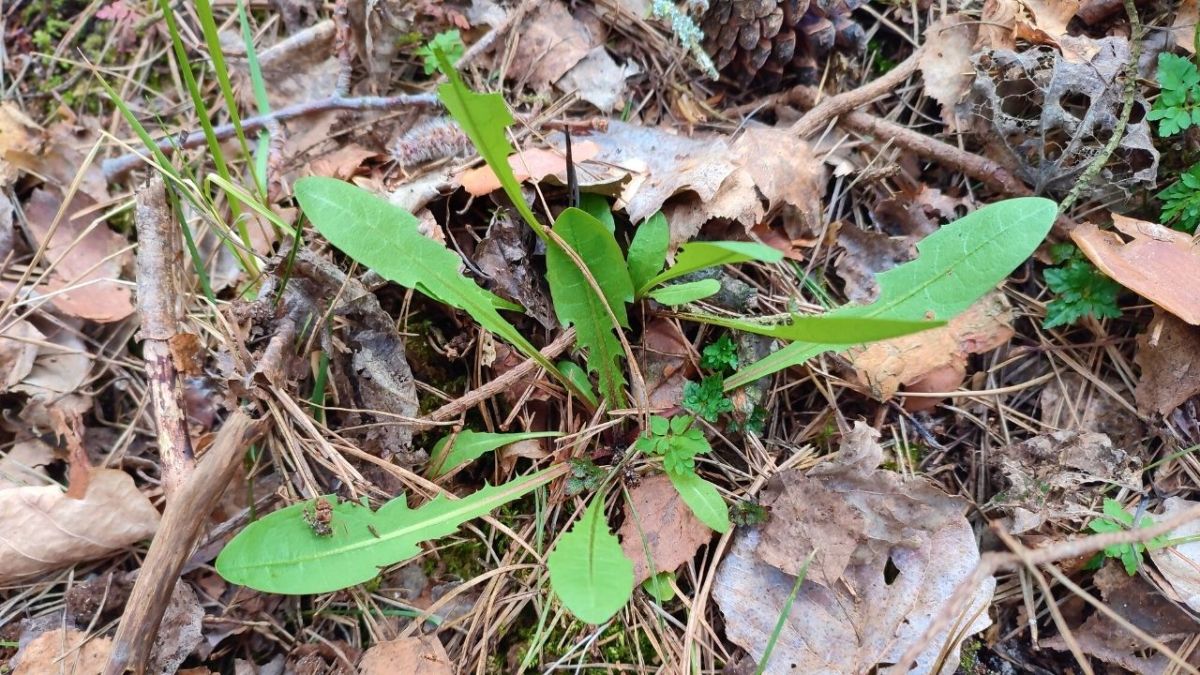
Dandelion jelly is particularly delicious. The recipe for it is basic and the great thing about it is that the jars can be stored closed for a long time. To complete this, you first remove the green leaves from the flower heads (about 300g) and rinse them thoroughly in a sieve.
Then cook the flowers in about 800 milliliters of water for about 5 minutes. Finally, let everything cool completely and strain the liquid over a bowl. You can use a fine sieve or a muslin cloth for this.
Cook the broth with the juice of a squeezed lemon and 500g of preserving sugar. When the jelly no longer drips off the spoon, it can be filled.
Additionally, you can do a test. Simply put some jelly on a plate. If it becomes firm, it's done. Now just fill it into screw-top jars, and you have a nice supply that will keep for a while.
P. S. You can find the dandelion portrait in my Dandelion Guide, and you can also harvest it in the fall. Take a look here and other wild herbs from the fall.
7. Primrose - perfect as a cold tea
Primroses are typical for spring. Since they love sandy, dry soils, you can often find them on dry meadows and sloping terrain.
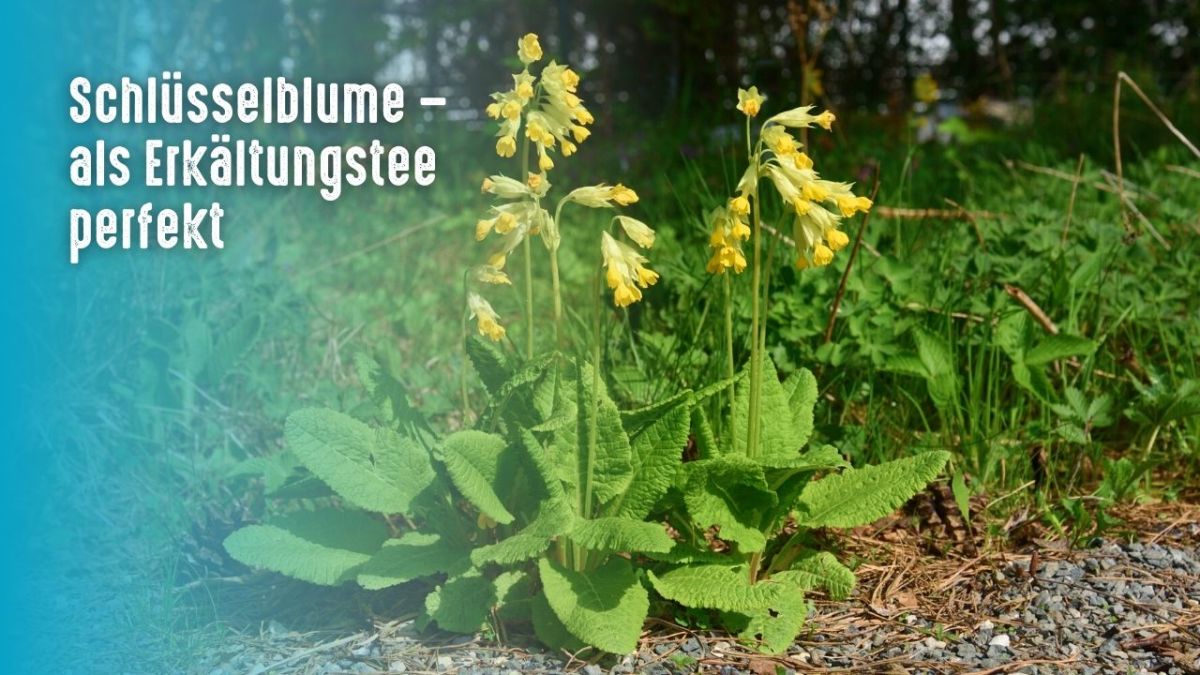
Their flowers are bright yellow and their leaves are thick, egg-shaped, and a light green color. Their shapes vary depending on the location. In wetter areas, confusion with a related species, the oxlip, can occur.
The leaves of the true primrose were used in the kitchen in the past, but were classified as stomach irritants. Besides vitamin C, it also contains mucus-dissolving substances, which is why it has established itself in medicine as a remedy for colds.
The flowers of the primrose can be used in fruit salads or as an edible decoration in desserts. Tea made from primrose roots is said to have a mood-enhancing effect. Furthermore, it has antispasmodic and antibacterial properties and can also be applied externally.
In modern medicine, you can mostly find them as components of cold and cough medicine, lozenges, and similar products.
You can make a cold and cough tea by combining dried primrose roots and some rib wort. With a little honey, it becomes more palatable and effective.
It is a reliable companion for upper and lower respiratory tract diseases, flu infections, and spring fatigue.
Caution: Collecting the plant should be avoided outside of survival situations, since it is regionally endangered in Germany and is particularly protected under the German Federal Species Protection Regulation.
8. Garlic mustard - a vitamin bomb with a garlic flavor
Another wild and medicinal plant you should know is the garlic mustard. It is also one of the first wild herbs in spring that should find their way into our kitchen.
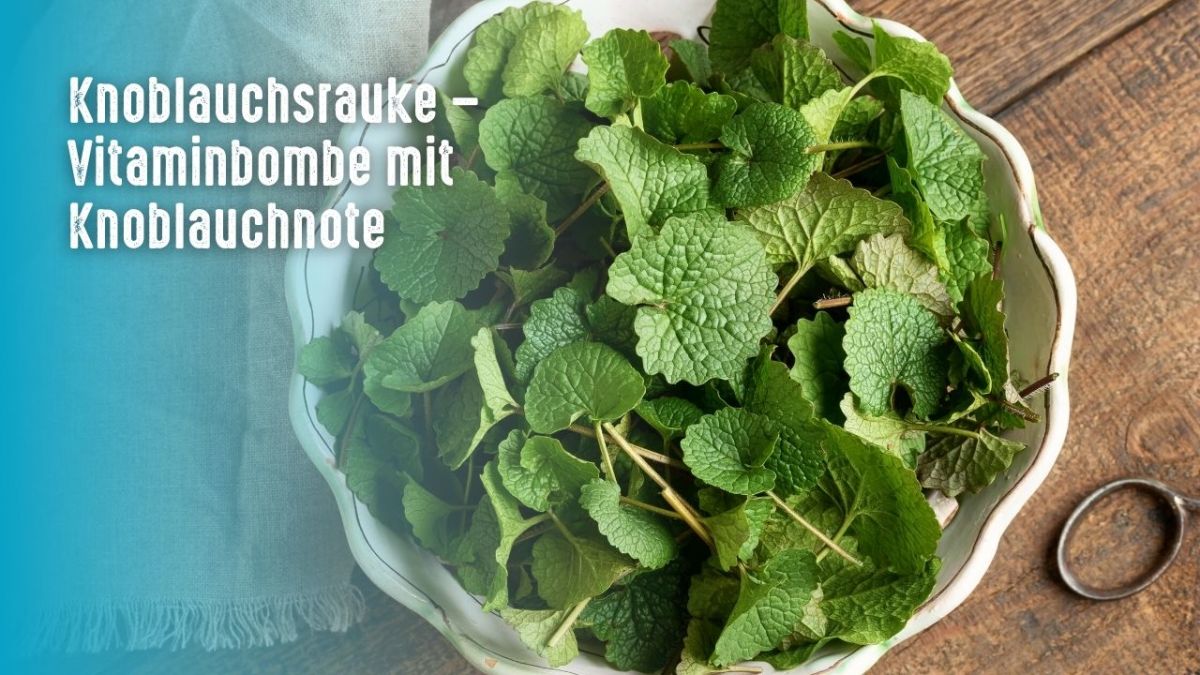
Aside from its flavor benefits, it also has healing and restorative properties.
Like garlic, it offers a sweet garlic flavor and can therefore enhance salads and herb dips. It also pairs well with cheese.
The great thing about garlic mustard is that it contains many vitamins, minerals, essential oils, and other things like sinigrin and carotene. Due to all of these natural plant substances and ingredients, garlic mustard has strong health benefits – it detoxifies the blood, is diuretic, expectorant, anti-inflammatory, and disinfectant.
Cooking and steaming unfortunately destroys the delicate flavor, which is why it is more suitable for cold dishes.
You can find it anywhere where predominantly semi-shade and shade prevail. From April onwards, you will find it wherever bushes, trees, or even walls and fences prevent direct sunlight.
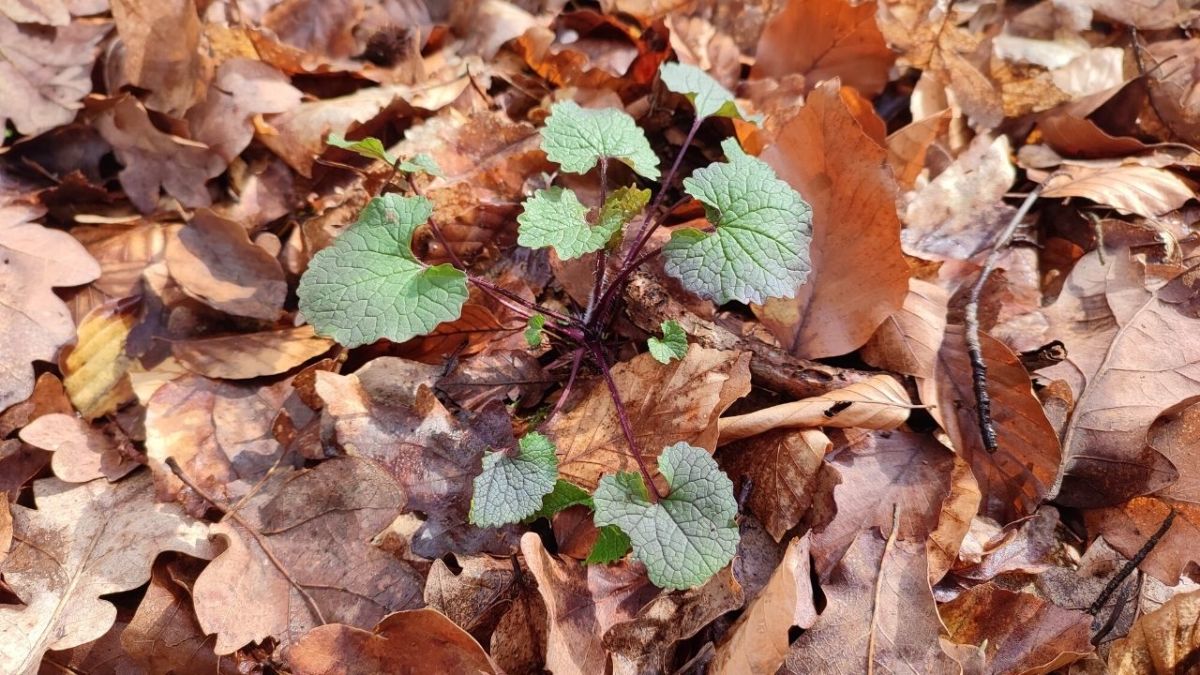
The leaves of the garlic mustard are initially kidney to heart-shaped and become increasingly pointed with age. It has white flowers arranged in clusters that sit only at the top of the plant and don't form shoots to the left or right.
The petals lie opposite each other and look like a small white cross. It slightly resembles the nettle in its leaf shape, but lacks the stinging hairs, which makes it easy to identify.
The whole plant is edible, but only the flowers, leaves, and seeds have found their way into our kitchen so far.
Reading Tip: In my article "Garlic Mustard: The Wild Vegetable With a Slight Garlic Taste," you will find a detailed portrait of the plant.
9. Meadow sweet – Spice and Pain Relief
This plant, which is more of an early summer herb, got its name because of its properties. As mead was sometimes quite bitter, the herb was used for sweetening and thus the term "mead-sweet" was born, which translates to "Mädesüß" in German.
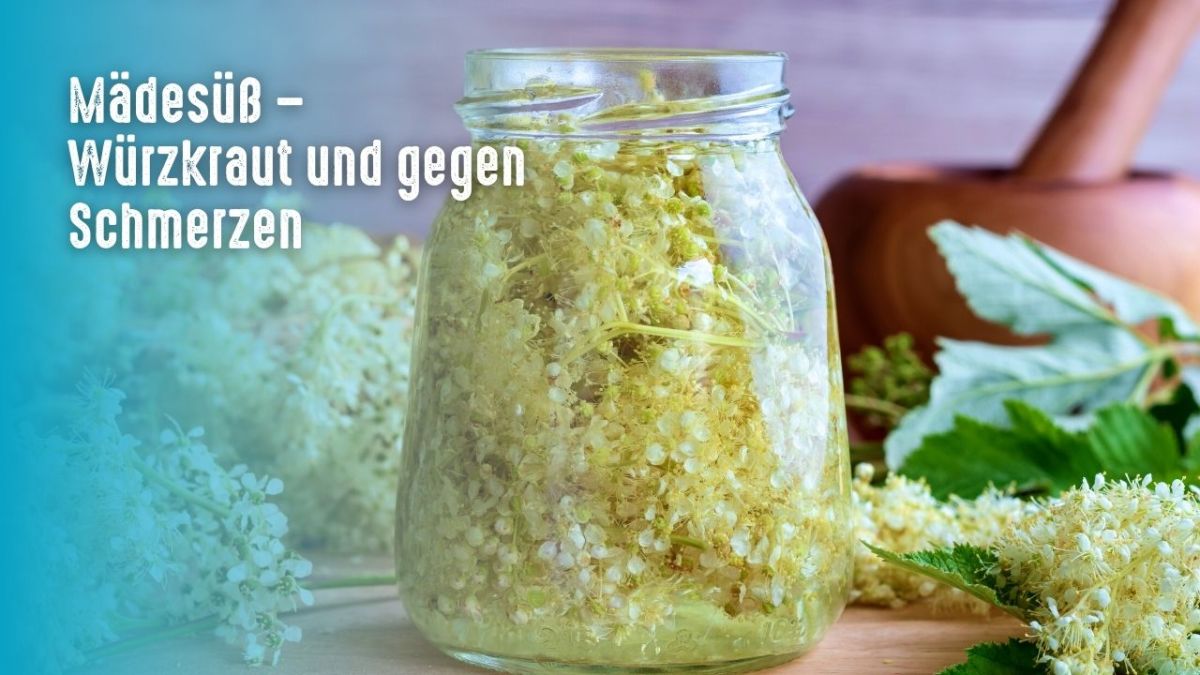
The plant is commonly found in meadows near the banks of rivers, streams, and lakes. It is also very common near waterfalls. Mädesüß can grow up to two meters high, but this size is actually quite rare.
You can harvest the herb and the white bushy flowers. Its leaves are always paired and feathered along the stem.
You can smell Mädesüß from a distance because its vanilla aroma is unmistakable.
In addition to its properties as a seasoning herb, Mädesüß also has the ability to relieve pain. Its active ingredient is salicylic acid, which is also found in willow bark. In western medicine, this active ingredient is used in aspirin.
Mädesüß also contains silica, and is fever-reducing and anti-inflammatory.
However, caution should be exercised when it comes to dosage. Following the motto that what has great power for good can also do the opposite, an overdose of Mädesüß can lead to headaches. Therefore, the amount should not exceed one and a half to two teaspoons per 250 ml.
As wild herbs are so versatile, you'll find the complete guide here: Meadow sweet - a wild herb that is effective in many ways and helps against pain.
10. Dead-nettle - against skin diseases
Dead-nettle is a flowering plant that occurs throughout Germany. It is often referred to as a weed that grows in the summer near water sources such as streams, ponds, and lakes.
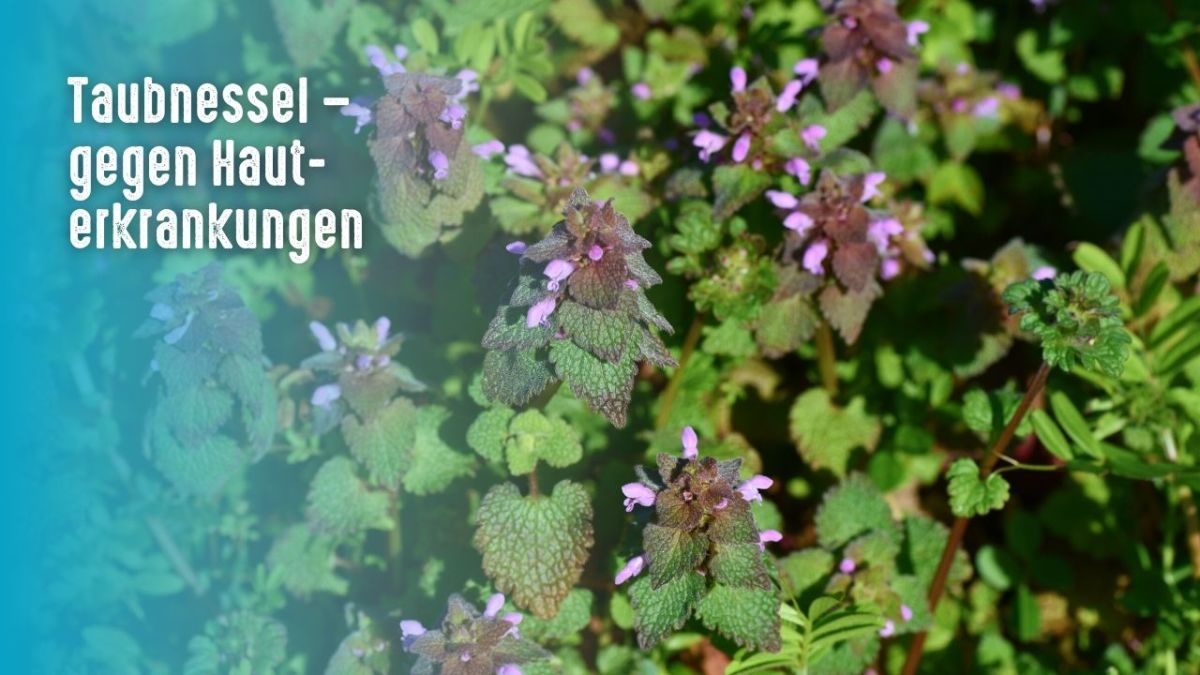
Dead-nettle, also known as Lamium album or white dead-nettle, is a flowering plant from the family Lamiaceae. It has a group of leaves with a main vein and small teeth on the edges, and the leaves are dark green. The flowers are white and grow on spikes at the end of tall stems that rise from the ground.
The dead-nettle is one of the most healing plants that can be used for both physical and mental health.
It is often used in herbal medicine to treat skin diseases such as eczema, psoriasis, and dandruff.
The top fresh shoots of the dead-nettle find their place raw in salads and green smoothies. Blanched dead-nettle is also a delicious side dish and is used in soups. Additionally, you can prepare it like spinach. Use the flowering shoots to make yourself a dead-nettle tea.
Here's how to prepare a cup of dead-nettle tea:
Pour 250 milliliters of hot but not boiling water over two teaspoons of fresh dead nettle flowers (or one teaspoon of dried dead nettle flowers). Cover and steep for ten minutes. Strain and enjoy while still hot.
11. Nettle - Power plant even in small size
Finally, I would like to introduce you to the ultimate power plant: the nettle. It is still tiny in spring, but has incredible powers.
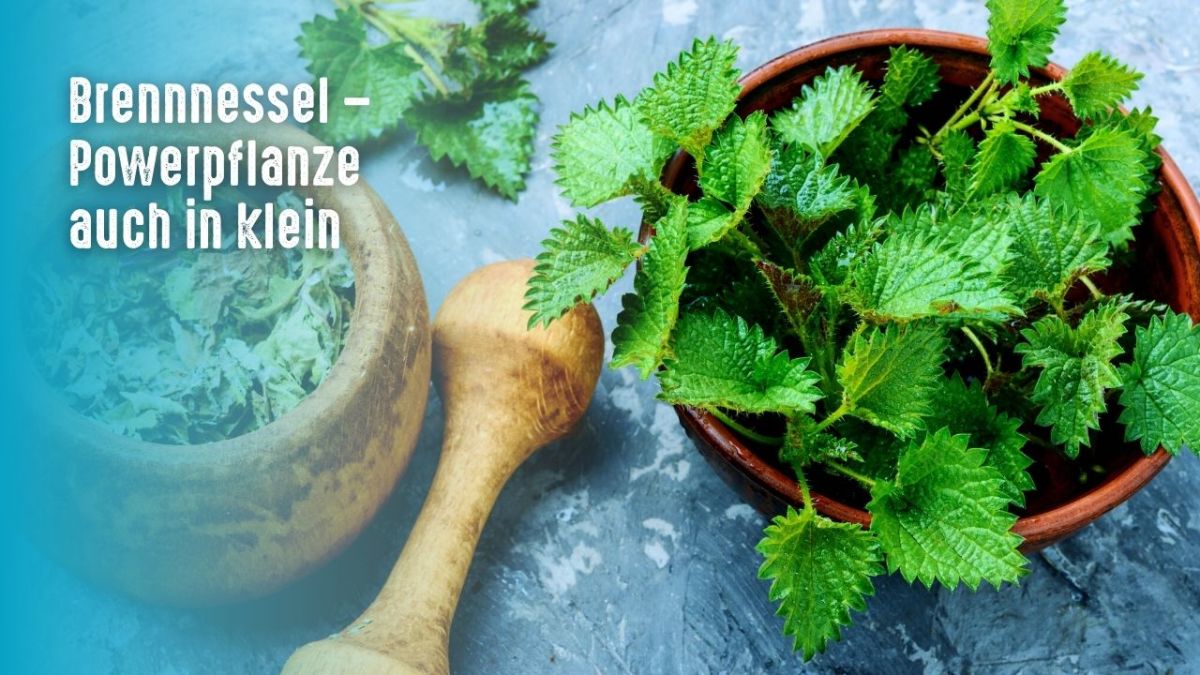
Nettle is a plant that is widely distributed in Europe. It is a tough, prickly plant that can grow up to 3 meters tall. The leaves grow opposite each other and can reach a diameter of up to 30 cm. The plant is covered with sharp, jagged spines that are stiff and brittle.
Nettle is a plant species that has been used in medicine for centuries. Recent studies have indicated that nettles also have strong antioxidant and anti-inflammatory properties. This means that they may have the potential to prevent certain types of cancer and cardiovascular diseases.
The leaves of the nettle can be eaten raw or cooked and are rich in vitamins A, C, and D. They are great in salads, smoothies, as a spinach substitute, or in tea.
Nettle leaves are also used to make herbal remedies such as poultices, tinctures, and ointments for the treatment of many skin conditions.
Nettle plants are often used in many crafts, including spinning ropes, weaving, dyeing, and basket weaving. In the past, even clothing was made from the fibers.
In my guide to nettle, you can learn even more about this power plant.
Summary – for every illness, there is a herb grown
All of these wild herb profiles, in conclusion, suggest the following: nature is rich in treasures, if you know how to use them.
Everything beautiful often has downsides or is threatened from one side or another. There is a prime example of this.
Wherever humans attempt to meddle with nature, deficits arise. This result is particularly evident in our native garden herbs. By trying to cultivate everything permanently, we manage to create leafy and adaptable plants, but unfortunately, this results in the loss of vitamins and minerals.
Valuable nutrients are lost more and more overtime, and so we also lose the plants' actual benefits and power. In this way, we harm ourselves.
Regrettably, the trend is towards profit, and the industry does not earn any money from something wild. However, everything could be so simple because every known garden or kitchen herb has a much stronger wild ancestor in nature. Often, this delivers up to 20 times more vitamins and minerals. The same applies to all cultivated vegetable varieties.
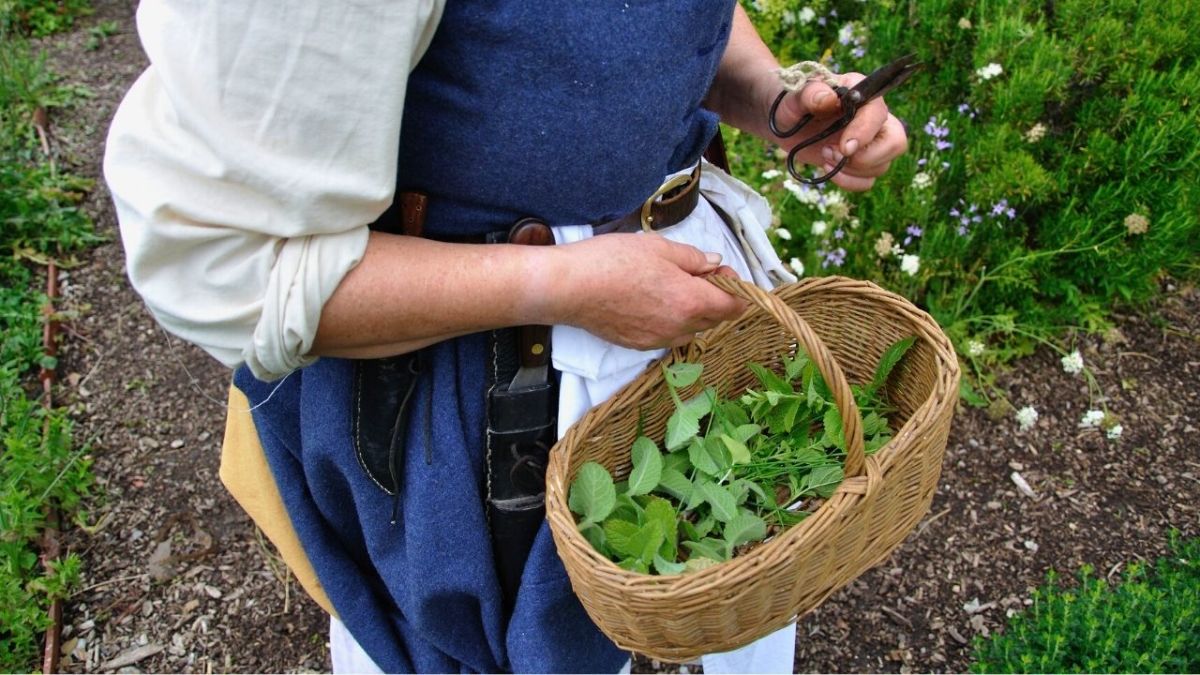
The carrot as we know it today comes from the original carrot. It is native to meadows and clearings and is even frequently found on field edges. Although it is not as visually appealing as the orange showcase carrot with its dirty beige color, its vitamin B content is sensational. (Here I also present the Wild Carrot).
And for those who need even more reason, there is also a stronger healing effect in the wild herbs and vegetables that no longer occur in cultivated plants because they have already been bred out.
The task of preserving and passing on this knowledge used to belong to healers and herbalists.
Today, we must do it ourselves and ensure that none of this knowledge is forgotten.
This way, future generations can learn and benefit from this wisdom. The proverb "there is a herb for every disease" exists for a reason.


Author of the guide
Martin Gebhardt
Hey, I'm Martin. On my blog, you will learn the basics and numerous details about living in the wild. I think survival, bushcraft and the good life in nature are the keys to happiness. Find me here on Instagram or on YouTube. You can find more about my mission on the About Me page.
Was this guide helpful?
44 people found this guide helpful.
5.00 out of 5 points (44 Ratings)
Comments (0)
This post may contain affiliate links. So if you click on the links and make a purchase, I will receive a small commission at no additional cost to you. Click here, to learn more about it.



